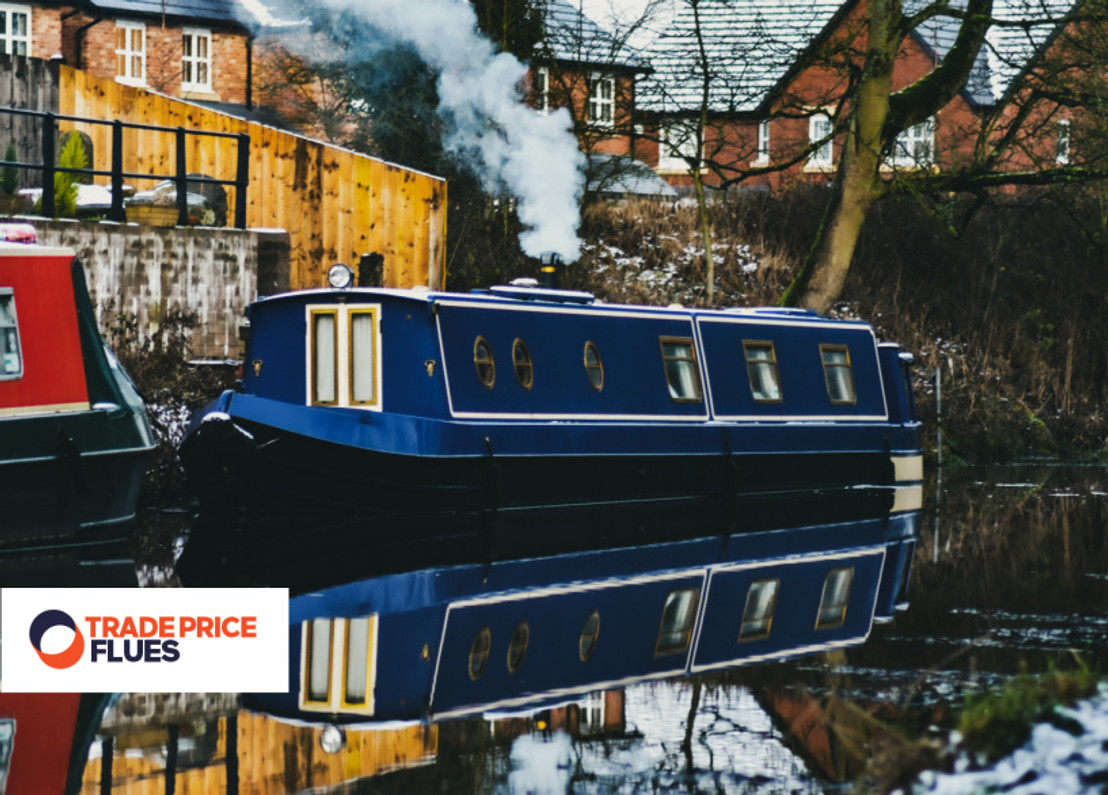How Do You Fit a Stove and Chimney Flue on a Canal Boat?
Chugging along on a canal boat is one of life’s pleasures. But spend a decent amount of time on one and you’ll quickly realise that all of that water quickly saps away heat. Things can get chilly, quickly. Which is why you might be wondering how to fit a solid fuel stove and chimney flue on your canal boat. Keep on reading to find out!
Use a qualified professional to install your canal boat stove
Before we continue, we’d like to stress how important it is to use a qualified professional to install your canal boat stove and chimney flue.
Whilst there’s no legal requirement to use a qualified professional, we’d argue that the implications of incorrectly installing a stove and chimney flue are so severe that you’d be foolish not to hire a qualified installer.
If you’re not sure where to find a suitably qualified installer, HETAS (Heating Equipment Testing and Approvals Scheme), maintains a database of registered installers.
Check your canal boat’s ventilation
Whilst you might be tempted in your excitement to rush out and buy a stove, you should first ensure your canal boat has sufficient ventilation.
How much ventilation does your canal boat stove require? The British Standards Institute’s BS 8511:2010 Code of practice for the installation of solid fuel heating and cooking appliances in small craft sets out a ventilation formula which takes into account the fact that solid fuel stoves consume a huge amount of oxygen.
The formula for calculating the fixed ventilation requirements of a canal boat (in mm²) is as follows:
= [2200 x U] + [650 x P] + [550 x H] + [440 x F], where:
U = input rating for all unflued appliances (inc. cookers) (in kW)
P = number of persons for which the accommodation space is designed
H = nominal output rating of all open-flued solid fuel appliances (in kW)
F = input rating for all open-flued appliances (in kW)
You should make this ventilation calculation with reference to the output ratings of your chosen stove. You’ll generally find your stove’s output ratings either on a plate on the side of the stove or on the manufacturer’s specification sheet.
Another way of calculating the required ventilation space in your canal boat is as follows:
> Ensure you have a completely open vent of 500mm² (about 1” square) for each 1kW of heat output from your stove. Ideally, these vents should be divided between high and low areas in your canal boat.
So, if you’ve made your calculations and you’ll have sufficient ventilation for a stove, it’s time to select the right stove for your canal boat.
Picking the right stove for your canal boat
When it comes to selecting the right stove for your canal boat, there are several factors that you will need to consider:
> The stove should be recommended by the manufacturer for use in boats. Not all stoves are suitable for use in marine craft.
> It should have a heat output that’s appropriate for the space to be heated. In general, canal boat stoves do not exceed 4.5kW in heat output.
> The stove should have a securely latched door(s) that won’t swing or jolt open if your canal boat encounters turbulence.
> If you’re planning to moor in urban areas, then you should buy a DEFRA-approved stove. These types of stoves are permitted for use in smoke control areas.
Where to locate a stove in a canal boat
Once you’ve selected an appropriate stove, you need to give some thought as to its location on the canal boat.
Keep your stove away from combustibles
Firstly, and we realise this is a rather obvious point, but you should ensure that your stove is located well away from any combustible materials such as soft furnishing, curtains etc. It’s recommended that any potentially combustible materials are at least 800mm away from the stove. In the cramped space of a canal boat this can be difficult, but it’s important that you adhere to this combustible ‘exclusion zone’.
Fit heat protection panels
If you are worried that your stove may still be too close to potentially combustible materials, then you should take the added precaution of fitting heat protection panels around your stove.
Properly set-up heat protection panels will be made from 25mm thick calcium silicate board with a 10mm air gap (supported on off cuts) between the protection panel and the wall of your canal boat. Your stove should then be positioned at least 45mm away from the heat protection panel.
In addition, your heat protection panels should extend at least 200mm above the body of the stove.
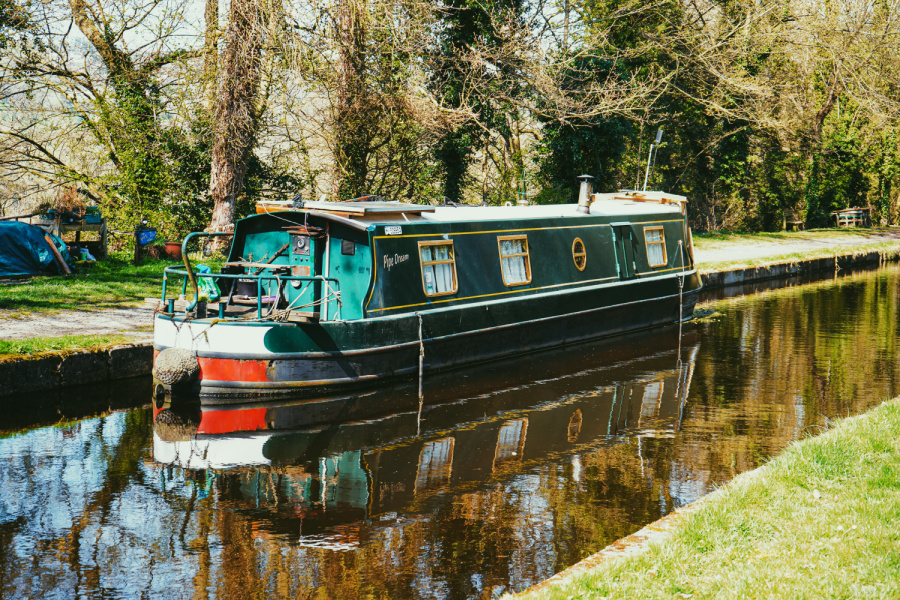
Use an appropriate hearth
You shouldn’t just sit your stove on the floor of your canal boat. That’s a recipe for disaster. Instead you should fit a hearth which is made of sturdy, non-flammable material.
The hearth should project at least 225mm in front of your stove and 150mm either side. This will provide you with a safe boundary around your stove.
Remember that your hearth should be fixed to the boat’s main structure so that it doesn’t move.
Fix your stove firmly in place
It isn’t enough to simply place your stove on a hearth. Because of the way canal boats and barges tend to ‘rock’ in the water, you should affix your stove firmly in place. This will prevent your stove from tipping over, which is an obvious fire hazard.
When fixing your stove in place, you should also ensure that your stove doesn’t block or obstruct any passageways.
Select the correct chimney flue for your canal boat stove
One of the most important parts of installing a solid fuel stove on a canal boat is selecting the correct chimney flue. It’s the flue that’ll take the smoke and other combustibles expelled by your stove and funnel them safely outside.
Getting any part of the flue installation wrong can have serious health and safety consequences.
Canal boat chimney flues
For a canal boat, there is a specific type of chimney flue that you require: a twin wall flue.
Twin wall flues are used in situations where a traditional chimney stack is not available.
A twin wall flue is basically a flue pipe, inside of another flue pipe, with a layer of insulation between the two pipes.
This means that the exterior of the twin wall flue pipe does not get hot and therefore won’t cause damage to nearby materials/structures (note - a twin wall flue will still be warm to the touch when in use).
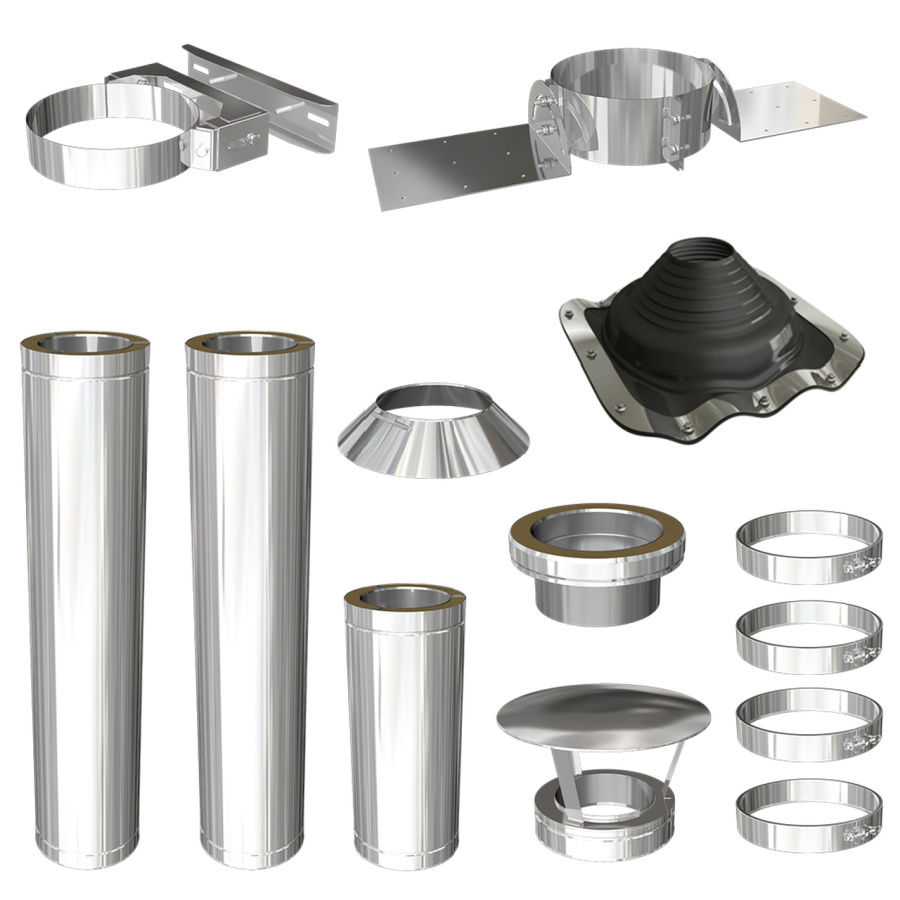
Shop Now - Single Storey Chimney Flue Kit
Chimney flue sizing
When selecting a twin wall flue for your canal boat stove, you will want to make sure that you select the correct diameter of flue. The diameter you require will generally be determined by your stove. If you are not sure, check the stove manufacturer’s specification sheet. This will tell you what diameter flue pipe will connect with your stove’s chimney pipe.
You may need to buy a variety of connectors in order to affix your stove to the flue, however where possible you should ensure that the connection from the stove to the flue is as straight as possible.
Guide - For more information on selecting the right size flue for your stove, read our guide here.
Joining chimney flue sections together
Depending on the size of your canal boat and stove, you may need to fix several pieces of chimney flue pipe together in order to achieve the required length.
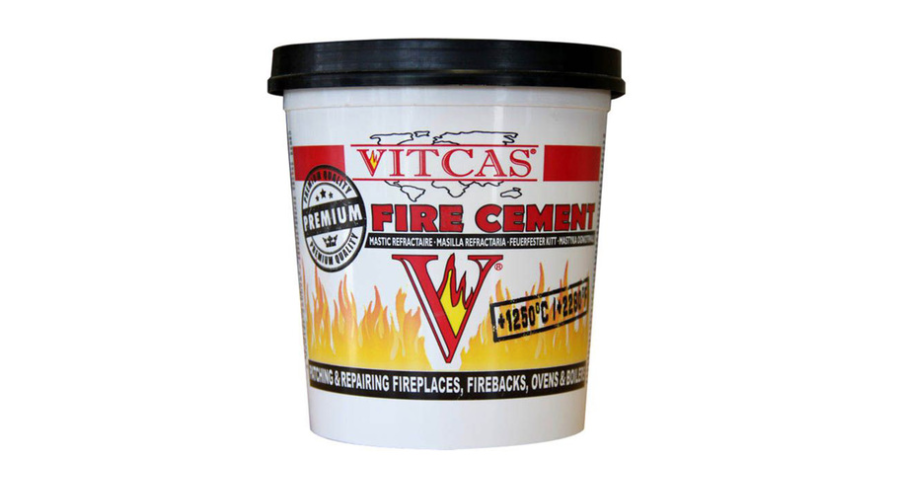
Shop Now - Victas Fire Cement
This is fine, but remember to join the pieces of flue pipe together in the right way.
Flue pipes fit socket end up and should be sealed together with fire cement. Ensure that there are no gaps that would enable smoke or carbon monoxide (CO) to escape into your living space.
Securing your canal boat chimney flue in place
When running the chimney flue up from the stove, you will need to affix it to the wall of your canal boat using brackets. It’s highly recommended that you fix the flue in place, as any movement or flex could cause gaps in the flue pipes, risking the escape of dangerous CO gases.
Many twin wall flues kits will come complete with the brackets you need to hold the flue in place as it rises up from your stove.
When securing the flue in place it is recommended that flue is kept three quarters of its diameter away from unprotected combustibles.
Running the chimney flue through the roof of your canal boat
The twin wall flue will run up from the stove and through the roof of your canal boat (the insulation of the twin wall flue will prevent any damage to the roof).
Where the twin wall flue passes through the roof, it should touch no part of the roof and should have enough room to expand slightly.
Weatherproofing your canal boat’s chimney flue
If you’re worried that running a chimney flue through the roof of your canal boat will leave a hole exposed to the elements, don’t! There are a wide variety of storm collars that will fit over the flue and cover the hole, preventing the ingress of rain and wind. Depending on the roof of your canal boat, you may choose to use flashing instead to seal up the area around the chimney flue’s exit from the inside of the boat.
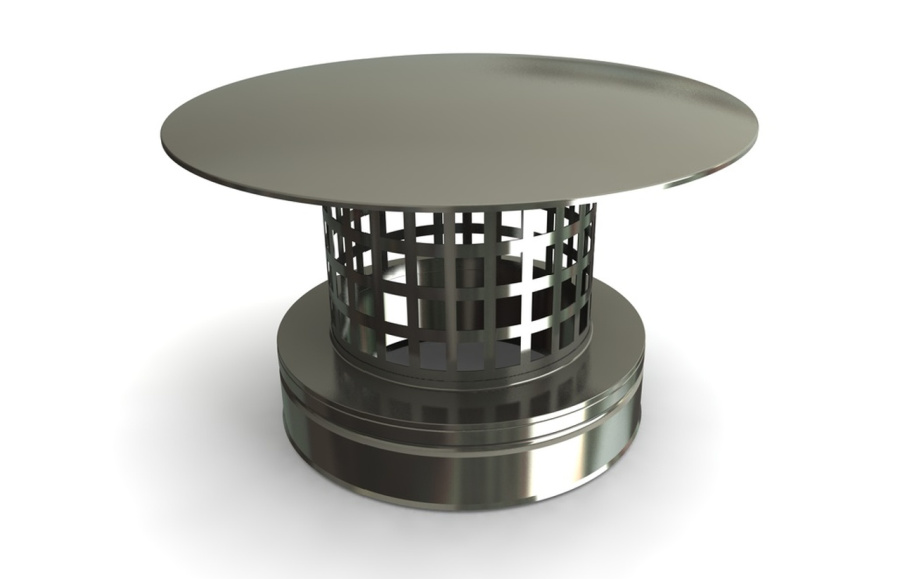
Shop Now - 5” Rain Cap with Mesh
You should also invest in a rain cap for your chimney flue. This will prevent water and wind from getting down your chimney flue. As with storm collars, there are a wide variety of rain caps available on the market.
The benefits of using a twin wall flue
Not only are twin wall flues recommended from a safety perspective, but they also have many other benefits:
> They will make the fire in your stove more efficient, reducing your fuel bills.
> They help your stove produce more heat.
> A twin wall flue will help to make your stove fire more controllable.
> It’ll be much easier to light a fire.
Safely operating your canal boat stove
Once the installation of your stove and chimney flue has been completed, you should ensure that you operate it in a safe way.
Invest in a carbon monoxide detector
One of the most important things you should do is to buy and install a carbon monoxide alarm. As this story from narrowboat blogger Paul Smith demonstrates, carbon monoxide alarms are vital in detecting potentially fatal leaks/faults from solid fuel stoves on canal boats.
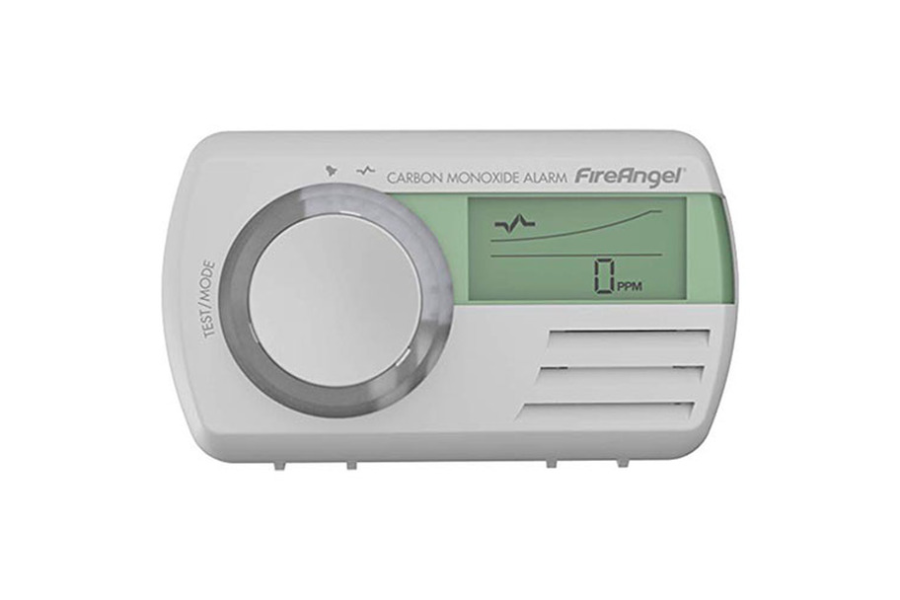
Shop Now - Fire Angel Digital Carbon Monoxide Detector
So, before you operate your stove for the first time, invest in a good quality carbon monoxide detector.
Note - Although most canal boats have smoke alarms, you should also buy a carbon monoxide alarm. Don’t rely on one, to do the job of the other!
Use appropriate fuels
It may be tempting to save money and burn scrap wood etc on your stove, but we’d strongly advise against this. Not only can scrap wood give off noxious fumes (if they’ve been painted or treated with certain chemicals), but they often don’t burn well and will leave a considerable mess.
Instead, you should use a ‘Ready to Burn’ certified fuel such as dried logs, briquettes, pellets or chips. Not only do these fuels burn more efficiently, but they’re far cleaner too, so you’ll be doing your bit for the environment!
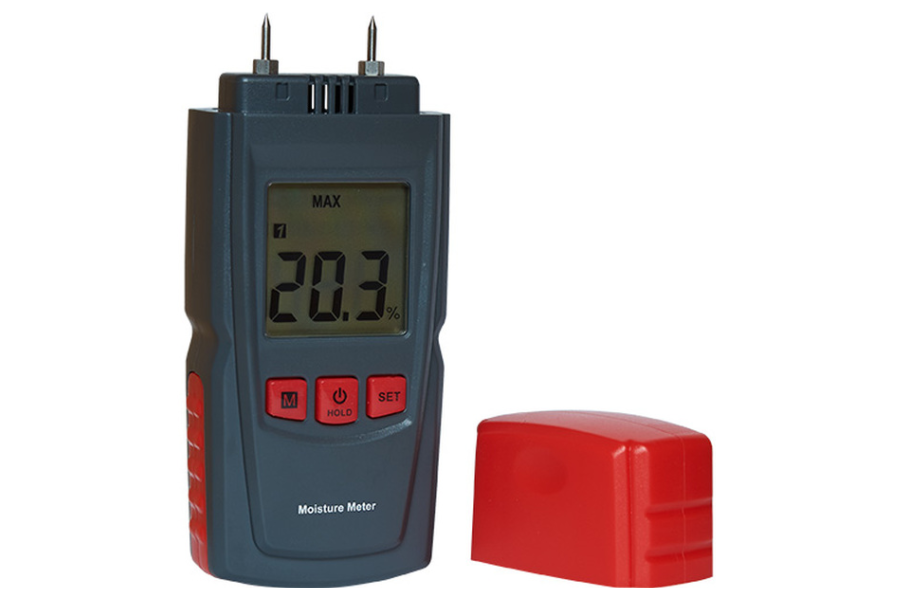
Shop Now - Wood Moisture Meter
If you do want to source your own wood, then we recommend investing in a wood moisture meter. This will help you select wood that is sufficiently dried to give you the best possible burn.
Note - If you’re going to be using your stove whilst you’re moored in an urban area, make sure you only burn smokeless fuels that are approved for use in smokeless zones.
Inspect and clean your stove regularly
Once you’ve started using your stove, you should inspect and clean your stove on a regular basis.
Of particular importance is the ash door of your stove (if your stove has one). Whilst you should clear ash out of your stove regularly, always remember to close the ash door afterwards. If the ash door is left open this can cause the fire to burn far too fiercely, which is a common cause of canal boat fires.
Canal and narrowboat chimney flues at Trade Price Flues
We hope you’ve found our guide to installing solid fuel stoves and chimney flues on canal boats useful.
If you’re looking for an appropriate chimney flue and accessories for your canal boat, you’ll find everything you need here at Trade Price Flues. However, if you’re not too sure what you need, or would like to talk over your requirements, feel free to contact our team who will be happy to help!
Shop canal boat chimney flues at Trade Price Flues today
Read more chimney flue and stove advice on the Trade Price Flues blog…
Can You Fit a Wood Burning Stove and Chimney Flue in a Caravan? | What Size Flue Do I Need for a Wood Stove? | How to Connect Your Flue Liner to Your Stove Pipe
Latest Articles
-
Air Pollution Down in the UK Despite Record Wood Burner Sales
Great news! Wood-burning stoves, once considered environmental villains, have transformed into eco-f …18th Apr 2024 -
A Guide to Stove Installation in Lodges, Sheds, and Shepherd’s Huts
Shepherd’s huts, lodges, and sheds have become increasingly popular as charming retreats or alternat …25th Mar 2024 -
Pinned vs. Pinless Moisture Meters: Which is Best for Firewood?
When you collect or buy firewood, it usually starts very moist inside. Using sopping wet wood to bur …4th Mar 2024




